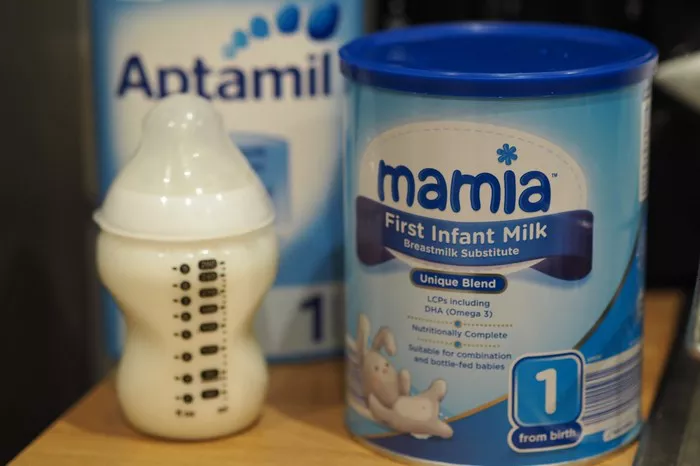Breastfeeding is often considered the gold standard for infant nutrition, providing numerous health benefits for both the baby and the mother. However, there are situations where mothers may need to supplement breast milk with formula due to various reasons such as low milk supply, medical issues, or personal preferences. In such cases, understanding how long breast milk mixed with formula remains safe and nutritious for the baby becomes crucial for the well-being of the infant. In this comprehensive guide, we will delve into the factors influencing the shelf life of mixed breast milk and formula, safety considerations, and best practices for storage and handling.
Understanding the Shelf Life of Mixed Breast Milk and Formula:
1. Chemical Composition and Stability:
Breast milk and formula have different compositions, with breast milk being a dynamic fluid containing various nutrients, antibodies, and enzymes tailored to meet the specific needs of the infant, while formula is a manufactured product with standardized ingredients. When mixed together, the chemical properties and stability of the resulting mixture can be altered. Breast milk contains live cells, immune factors, and enzymes that contribute to its unique composition and protective properties. On the other hand, formula is a sterile product with a fixed nutrient profile. Mixing these two liquids can lead to changes in pH, protein structure, and nutrient availability, potentially affecting the overall quality and safety of the mixture.
2. Microbial Growth:
One of the primary concerns when mixing breast milk and formula is the potential for microbial growth. Both breast milk and formula provide an ideal environment for bacteria and other microorganisms to proliferate if not handled and stored properly. The introduction of formula into breast milk can increase the risk of contamination, which can compromise the safety of the mixture. Bacteria such as Staphylococcus aureus, Salmonella, and Escherichia coli can multiply rapidly in mixed breast milk and formula, leading to foodborne illnesses such as diarrhea, vomiting, and fever in infants. Therefore, it is essential to minimize the time the mixture spends at room temperature and to follow strict hygiene practices during preparation and feeding.
3. Temperature and Storage Conditions:
The shelf life of mixed breast milk and formula is greatly influenced by temperature and storage conditions. Ideally, the mixture should be prepared fresh and consumed immediately to minimize the risk of bacterial contamination. If immediate consumption is not possible, proper storage is essential. Refrigeration slows down bacterial growth and helps preserve the quality of the mixture. However, it is important to note that refrigeration does not completely halt microbial activity, and the mixture should be used within a certain timeframe to ensure safety. According to the Centers for Disease Control and Prevention (CDC), mixed breast milk and formula can be stored in the refrigerator at 40°F (4°C) or below for up to 24 hours. However, it is best to use the mixture within 4 hours of preparation to minimize the risk of bacterial growth. If the mixture is left at room temperature for more than 2 hours, it should be discarded to prevent foodborne illness.
Safety Considerations and Best Practices:
1. Freshness is Key:
Whenever possible, it is best to prepare mixed breast milk and formula fresh for each feeding. This minimizes the risk of bacterial contamination and ensures that the baby receives the highest quality nutrition. If using powdered formula, it is important to follow the manufacturer’s instructions for mixing and preparation to ensure the correct ratio of formula to water.
2. Use Within a Reasonable Timeframe:
If preparing mixed breast milk and formula in advance, it is important to use it within a reasonable timeframe to ensure safety and quality. The general recommendation is to use mixed breast milk and formula within 24 hours if stored in the refrigerator. Discard any leftover mixture after this time to prevent the risk of bacterial growth. It is also important to note that once a baby has started drinking from a bottle, any leftover milk should be discarded within 1-2 hours to prevent bacterial contamination.
3. Proper Storage:
Proper storage is crucial for maintaining the safety and quality of mixed breast milk and formula. After preparing the mixture, store it in a clean, airtight container and place it in the refrigerator immediately. Avoid storing the mixture at room temperature for an extended period, as this can increase the risk of bacterial contamination. If traveling or away from home, use insulated cooler bags with ice packs to keep the mixture cold and safe for consumption.
4. Labeling and Rotation:
To avoid confusion and ensure freshness, label the container with the date and time the mixture was prepared. Additionally, practice proper rotation by using the oldest mixture first to prevent waste. If freezing breast milk or formula for later use, label the containers with the date of expression or preparation and use them within the recommended timeframe to maintain quality and safety.
5. Avoid Freezing Mixed Breast Milk and Formula:
While breast milk can be safely frozen for extended periods, freezing mixed breast milk and formula is not recommended. Freezing can alter the texture and composition of the mixture, leading to a decrease in quality and nutritional value. Instead, it is best to prepare fresh mixtures as needed and to discard any leftover portions to ensure the baby’s safety and well-being.
Conclusion:
In conclusion, the shelf life of mixed breast milk and formula depends on various factors including chemical composition, microbial growth, temperature, and storage conditions. While it is generally safe to mix breast milk and formula for feeding purposes, it is important to follow safety guidelines and best practices to ensure the well-being of the infant. Freshness, proper storage, and timely consumption are key considerations when preparing and using mixed breast milk and formula. By understanding these factors and following recommended guidelines, parents can provide their babies with safe and nutritious feeding options, promoting optimal growth and development in the early stages of life.


